
Asturias, Asturian: Asturies ) officially the Principality of Asturias, is an autonomous community in northwest Spain.
Bron is an argot spoken by itinerant coppersmiths and tinkers in Miranda, Avilés, Asturias, Spain, as well as textile merchants in Fornela, León, Spain and Cantal, Auvergne, France. Despite being endemic to Asturias, both bron and xíriga are unrelated to the Asturian language (bable).

Piloña is a municipality in the province and autonomous community of Asturias, northwestern Spain. Its capital is the town of Infiesto. Piloña is bounded to the north by Villaviciosa and Colunga, to the east by Parres, to the west by Nava and Cabranes, and to the south by Ponga, Caso, Sobrescobio and Laviana. The area is semi-mountainous with many small, but deep and narrow valleys.
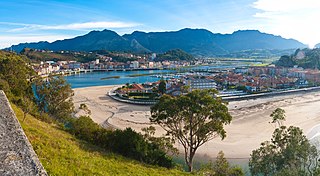
Ribadesella is a small 84-square-kilometre (32 sq mi) municipality in the Autonomous Community of the Principality of Asturias, Spain. Known for its location on the Cantabrian Sea, at the outlet of the River Sella, Ribadesella is a town that forms part of the Picos de Europa. It is bordered on the east by Llanes, on the south by Cangas de Onís and Parres, and on the west by Caravia. Ribadesella is the home town of Queen Letizia of Spain.
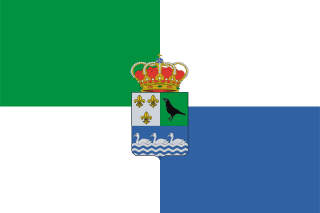
Colunga is a municipality in the Autonomous community of the Principality of Asturias, Spain. It lies on the Cantabrian Sea, and is bordered to the west by Villaviciosa, to the south by Parres and Piloña, and to the east by Caravia.
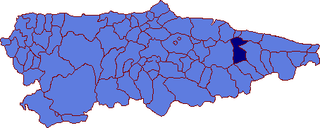
Parres is a municipality in the Autonomous Community of the Principality of Asturias, Spain. It is bordered on the north by Caravia and Ribadesella, on the east by Cangas de Onís, on the west by Piloña and Colunga, and on the south by Amieva.

The Jurassic Museum of Asturias is located in the area of Rasa de San Telmo near the parish of Llastres in the municipality of Colunga, Asturias, Spain. Though the municipality of Ribadesella was initially proposed, Colunga was chosen for the building site in the late 1990s. Several landmarks are visible from the museum including the Bay of Biscay, the Sierra del Sueve, and the Picos de Europa. Strategically located over a mount on the Rasa de San Temo, the museum is in the midst the Jurassic Asturias.

The Sierra del Sueve is a limestone massif located close to the coast in the east-central area of Asturias, Spain. It is a northern foothill of the Cantabrian Mountains. The range is located in the municipalities of northeast Caravia, Colunga in the northwest, Piloña, Parres and Ribadesella to the east and south.
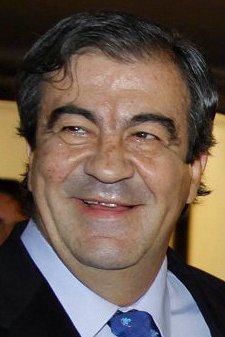
The 2011 Asturian regional election was held on Sunday, 22 May 2011, to elect the 8th General Junta of the Principality of Asturias. All 45 seats in the General Junta were up for election. The election was held simultaneously with regional elections in twelve other autonomous communities and local elections all throughout Spain.

The 2012 Asturian regional election was held on Sunday, 25 March 2012, to elect the 9th General Junta of the Principality of Asturias. All 45 seats in the General Junta were up for election. The election was held simultaneously with a regional election in Andalusia.

The 1987 Asturian regional election was held on Wednesday, 10 June 1987, to elect the 2nd General Junta of the Principality of Asturias. All 45 seats in the General Junta were up for election. The election was held simultaneously with regional elections in twelve other autonomous communities and local elections all throughout Spain, as well as the 1987 European Parliament election.

The 1991 Asturian regional election was held on Sunday, 26 May 1991, to elect the 3rd General Junta of the Principality of Asturias. All 45 seats in the General Junta were up for election. The election was held simultaneously with regional elections in twelve other autonomous communities and local elections all throughout Spain.

The 1995 Asturian regional election was held on Sunday, 28 May 1995, to elect the 4th General Junta of the Principality of Asturias. All 45 seats in the General Junta were up for election. The election was held simultaneously with regional elections in twelve other autonomous communities and local elections all throughout Spain.
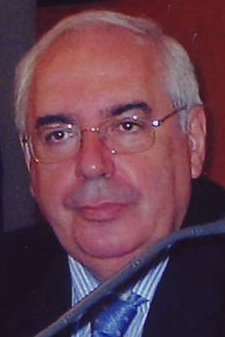
The 1999 Asturian regional election was held on Sunday, 13 June 1999, to elect the 5th General Junta of the Principality of Asturias. All 45 seats in the General Junta were up for election. The election was held simultaneously with regional elections in twelve other autonomous communities and local elections all throughout Spain, as well as the 1999 European Parliament election.

The 2003 Asturian regional election was held on Sunday, 25 May 2003, to elect the 6th General Junta of the Principality of Asturias. All 45 seats in the General Junta were up for election. The election was held simultaneously with regional elections in twelve other autonomous communities and local elections all throughout Spain.

The 2007 Asturian regional election was held on Sunday, 27 May 2007, to elect the 7th General Junta of the Principality of Asturias. All 45 seats in the General Junta were up for election. The election was held simultaneously with regional elections in twelve other autonomous communities and local elections all throughout Spain.

Eastern District is one of the three constituencies represented in the General Junta of the Principality of Asturias, the regional legislature of the Principality of Asturias. The constituency currently elects five deputies. It comprises the municipalities of Amieva, Cabrales, Cabranes, Cangas de Onís, Caravia, Colunga, Llanes, Nava, Onís, Parres, Peñamellera Alta, Peñamellera Baja, Piloña, Ponga, Ribadedeva, Ribadesella and Villaviciosa. The electoral system uses the D'Hondt method and a closed-list proportional representation, with a minimum threshold of three percent.
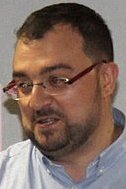
The 2019 Asturian regional election was held on Sunday, 26 May 2019, to elect the 11th General Junta of the Principality of Asturias. All 45 seats in the General Junta were up for election. The election was held simultaneously with regional elections in eleven other autonomous communities and local elections all throughout Spain, as well as the 2019 European Parliament election.

The 2023 Asturian regional election was held on Sunday, 28 May 2023, to elect the 12th General Junta of the Principality of Asturias. All 45 seats in the General Junta were up for election. The election was held simultaneously with regional elections in eleven other autonomous communities and local elections all throughout Spain.

The next Asturian regional election will be held no later than Sunday, 28 May 2023, to elect the 13th General Junta of the Principality of Asturias. All 45 seats in the General Junta will be up for election.



















